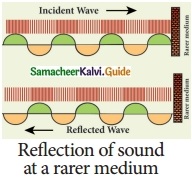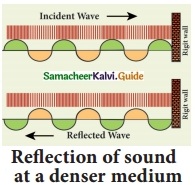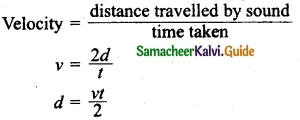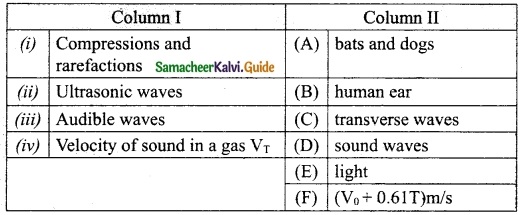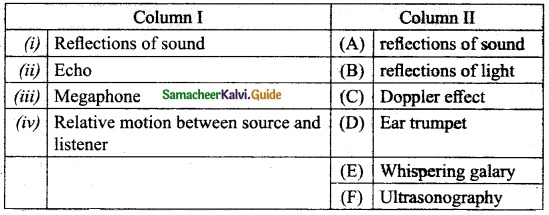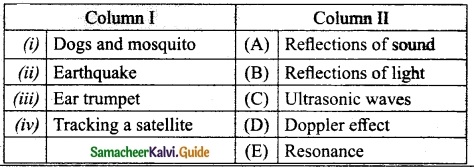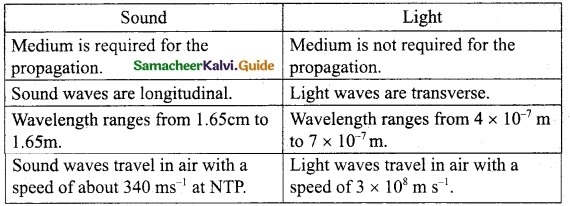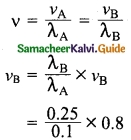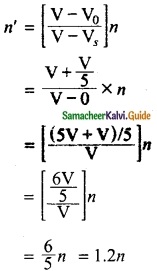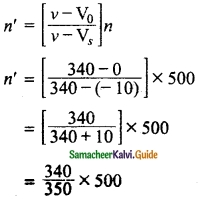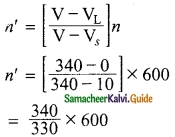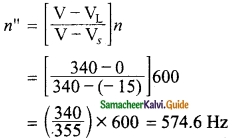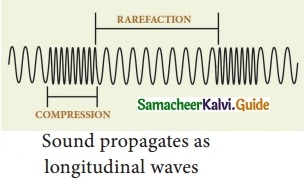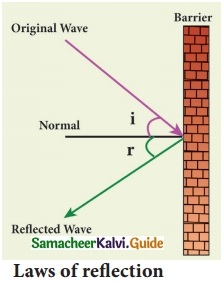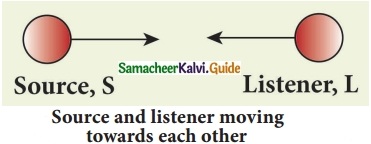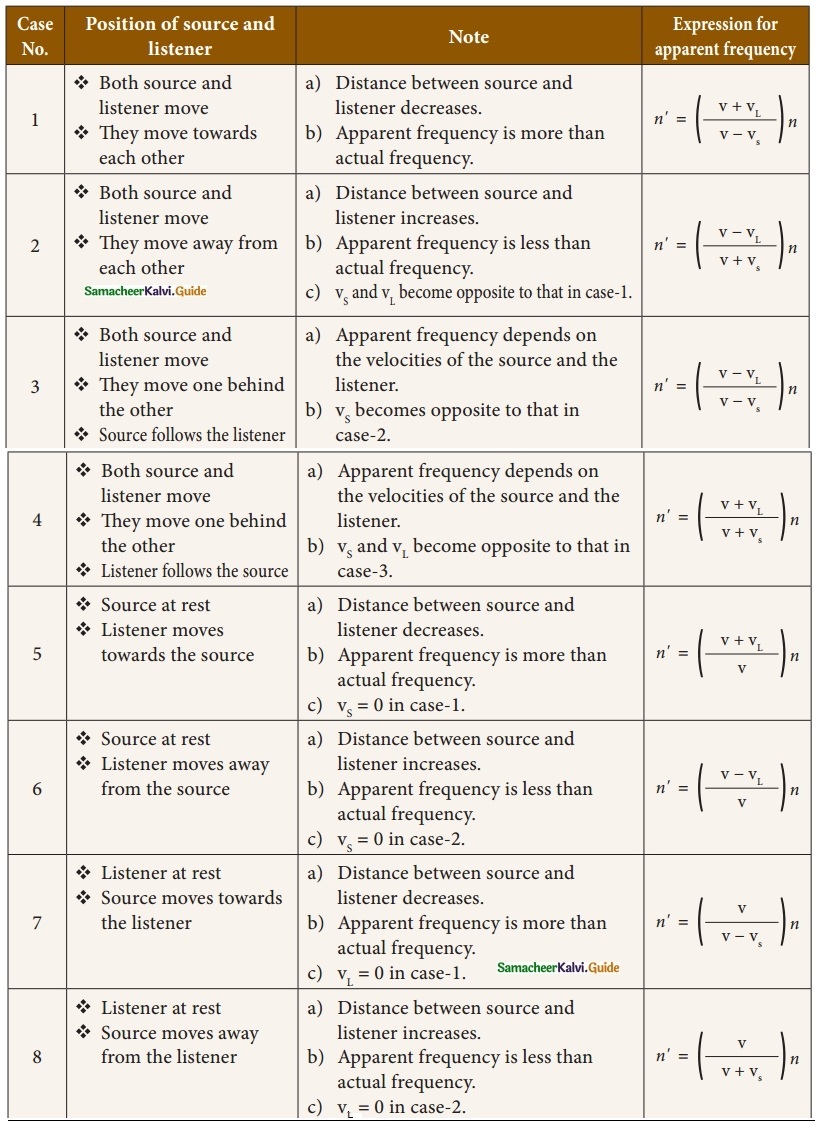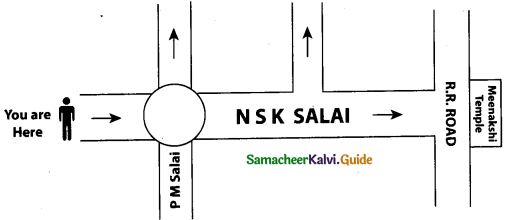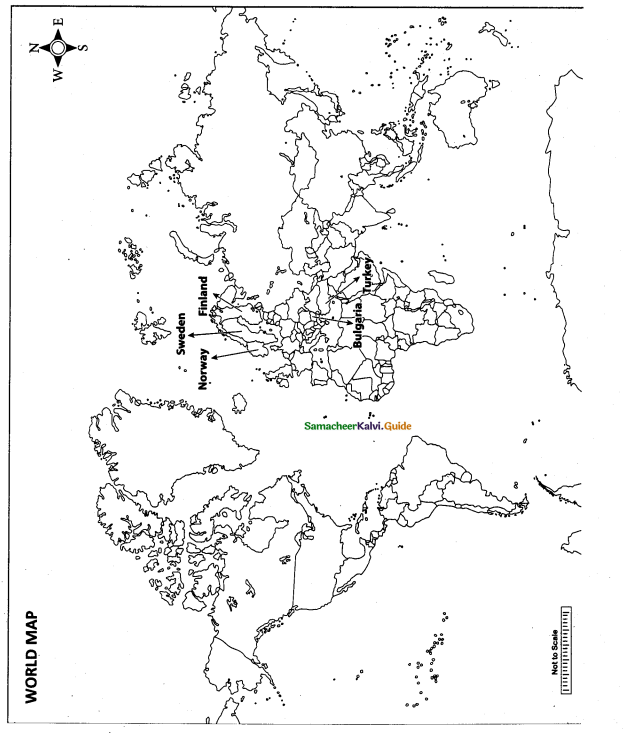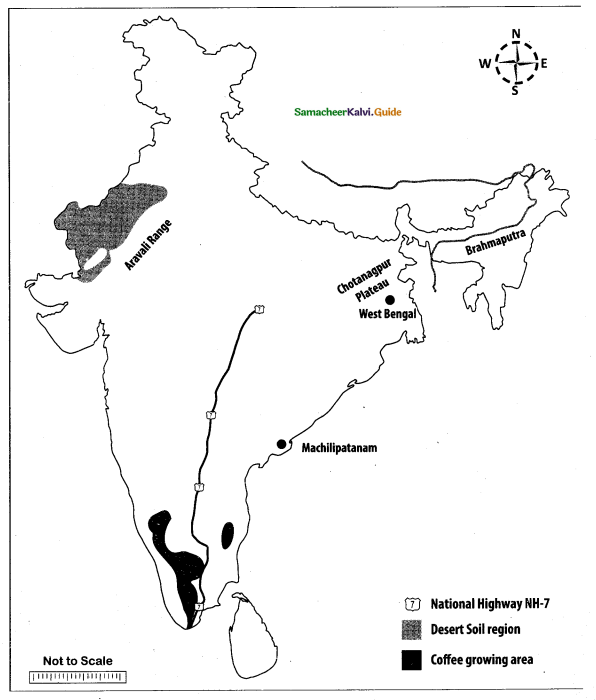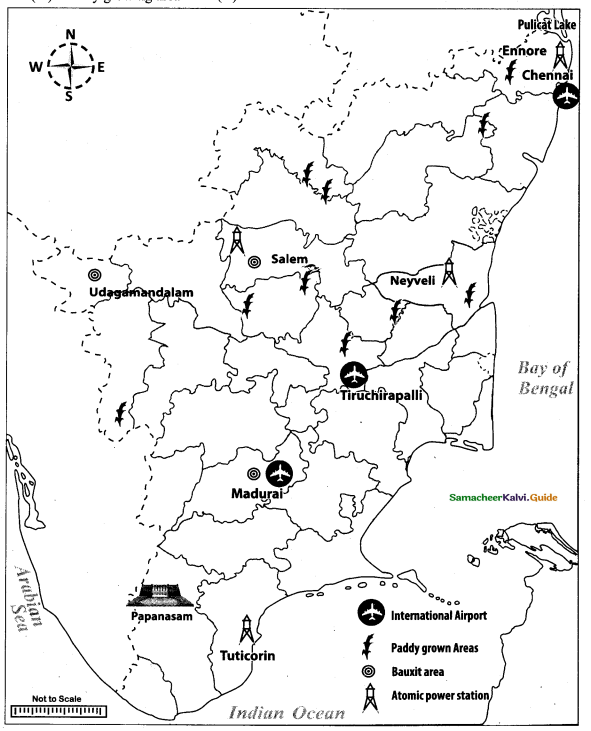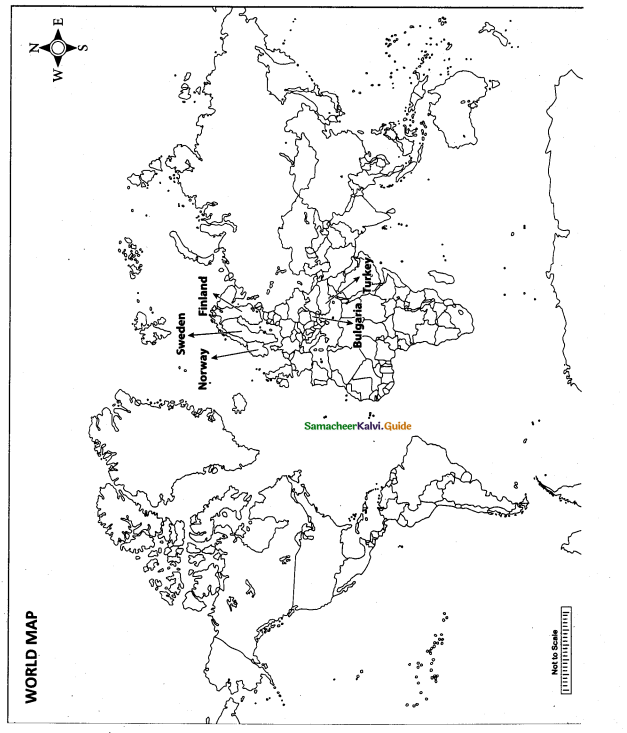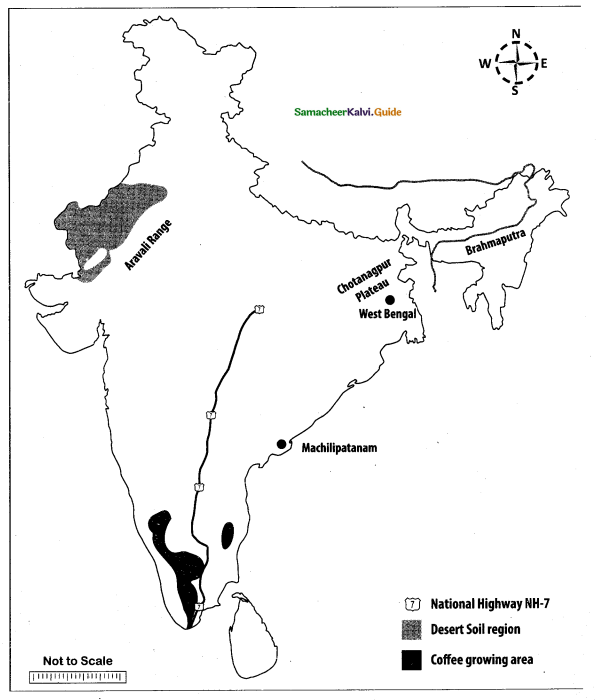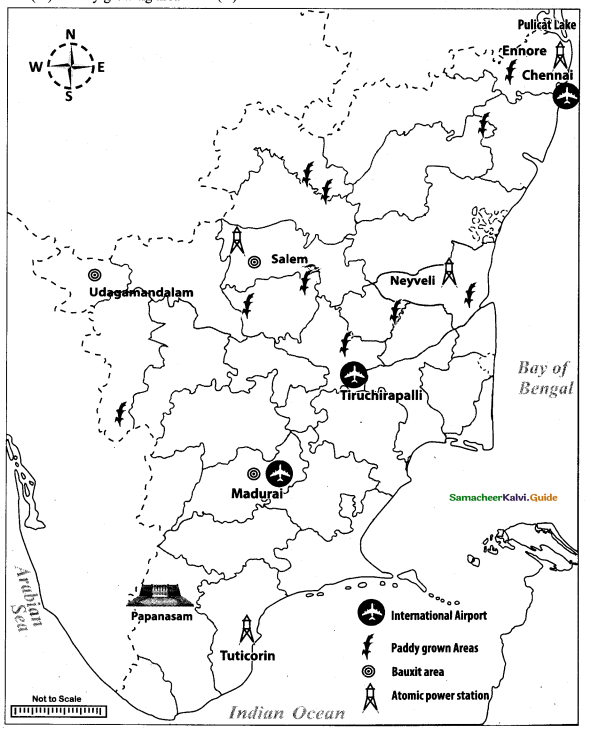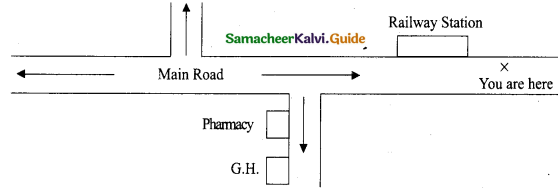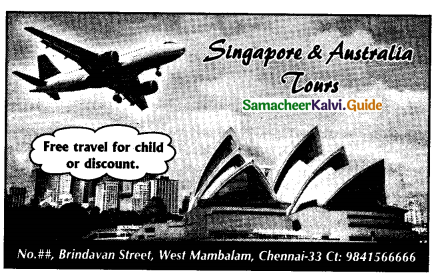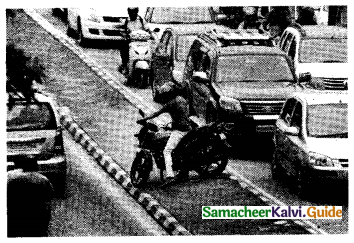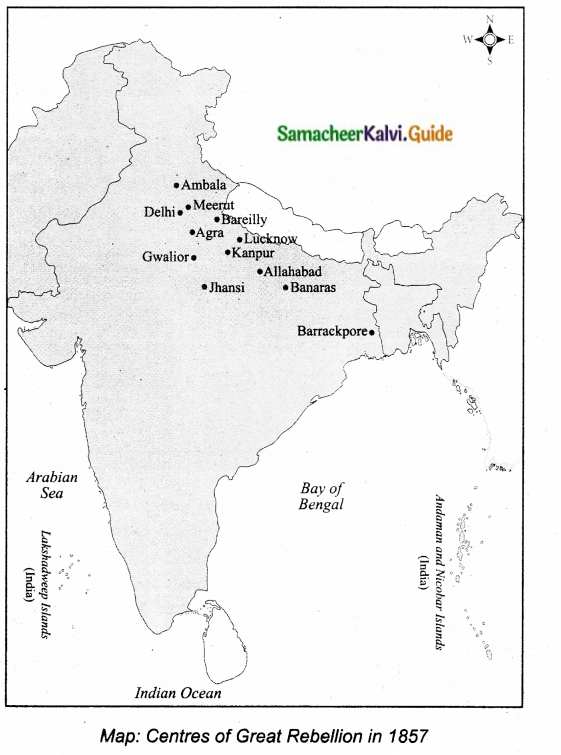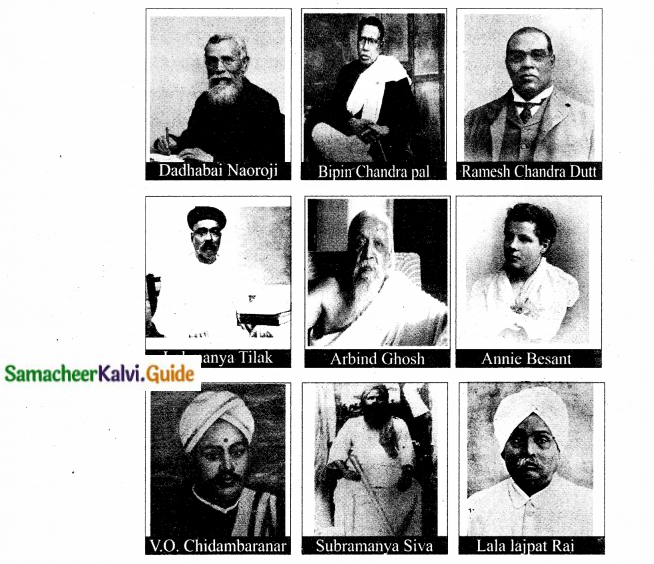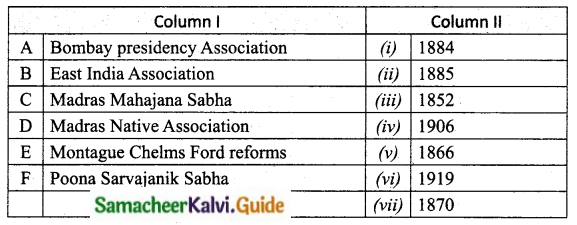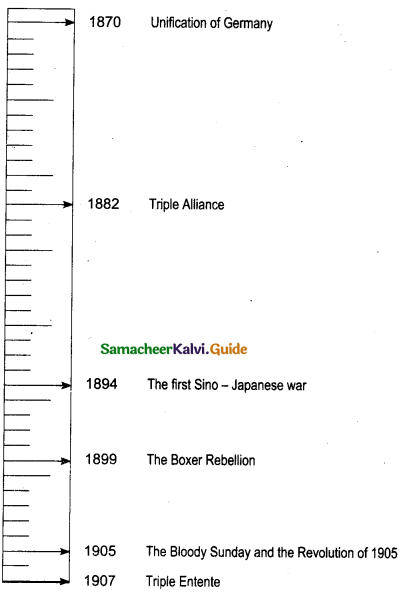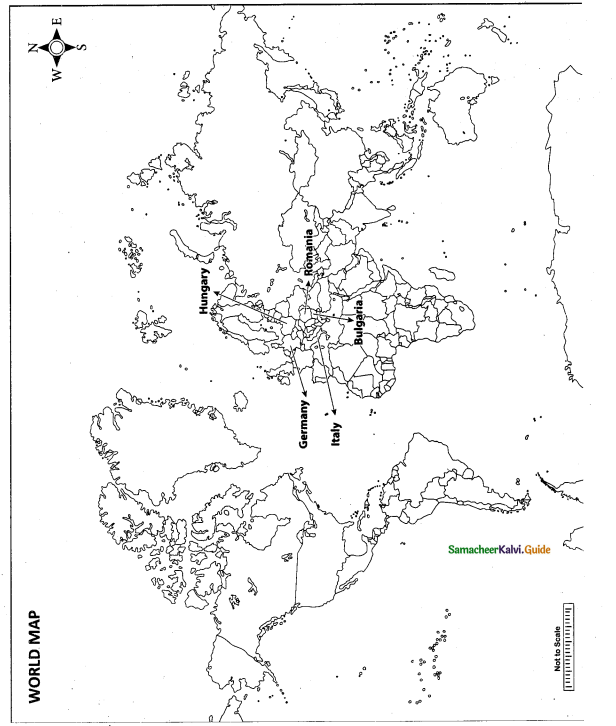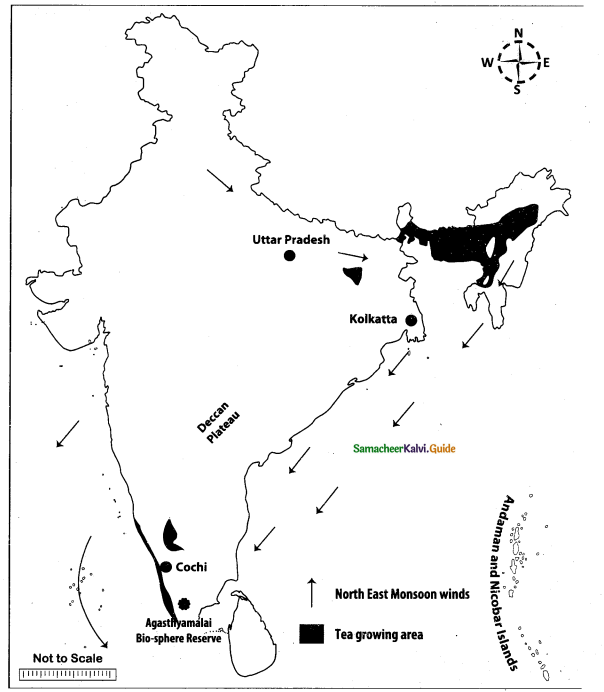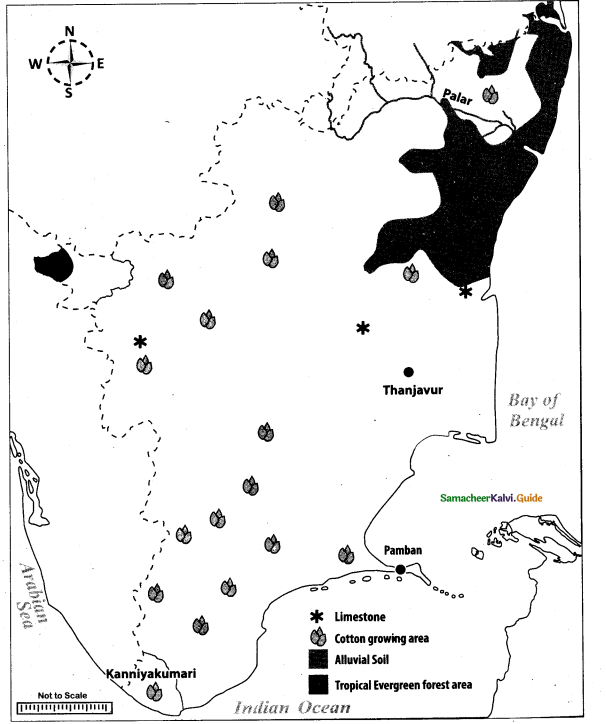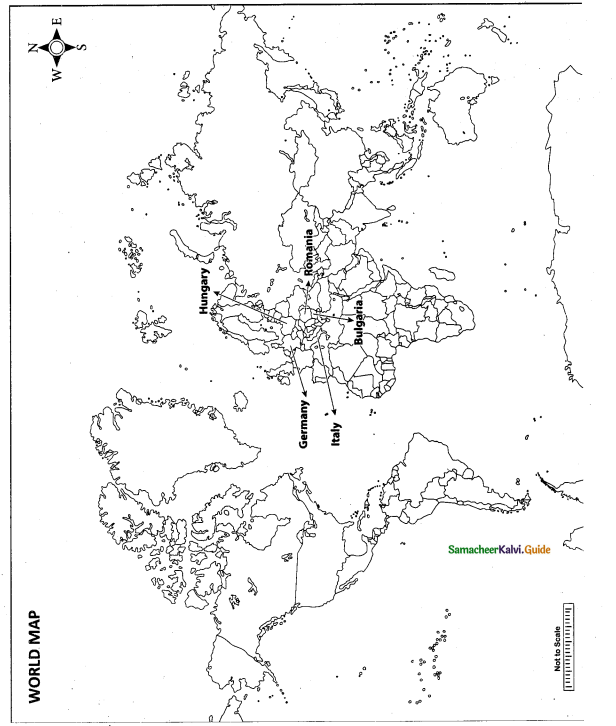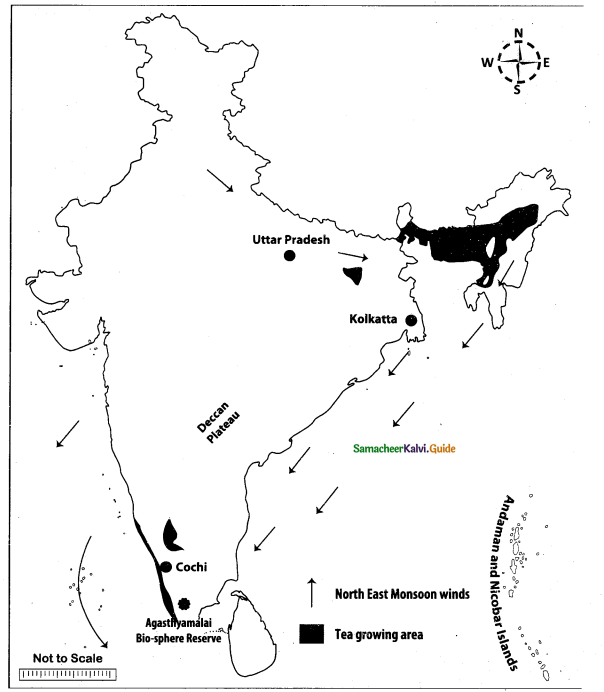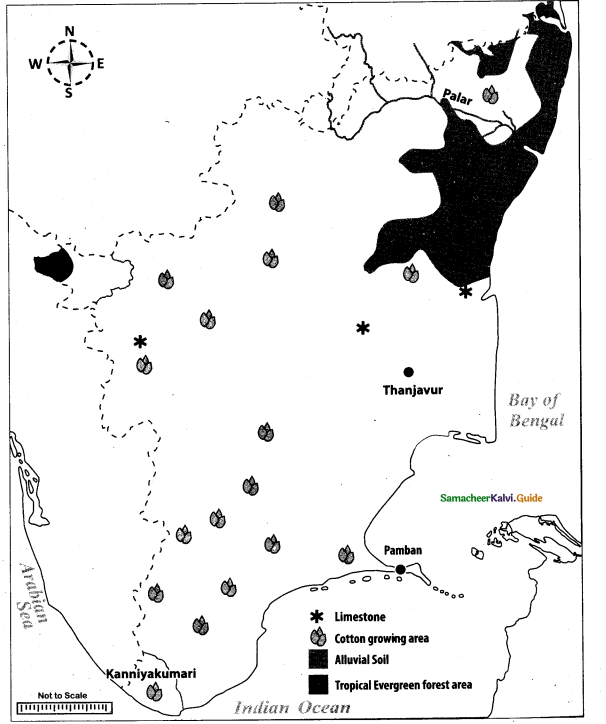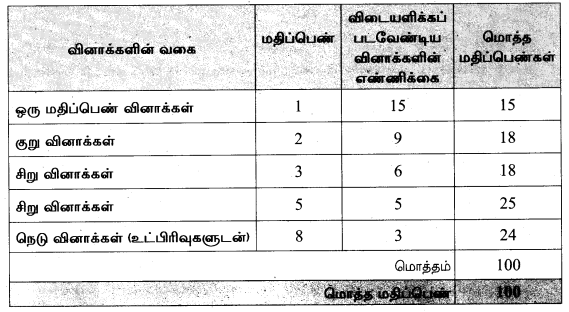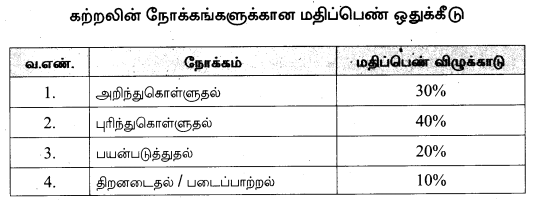Students can Download Samacheer Kalvi 10th Science Model Question Paper 4 English Medium Pdf, Samacheer Kalvi 10th Science Model Question Papers helps you to revise the complete Tamilnadu State Board New Syllabus, helps students complete homework assignments and to score high marks in board exams.
Tamil Nadu Samacheer Kalvi 10th Science Model Question Paper 4 English Medium
General Instructions:
- The question paper comprises of four parts
- You are to attempt all the questions in each part. An internal choice of questions is provided wherever applicable.
- All questions of Part I, II, III and IV are to be attempted separately.
- Question numbers 1 to 12 in Part I are Multiple Choice Questions of one mark each.
These are to be answered by writing the correct answer along with the corresponding option code. - Question numbers 13 to 22 in Part II are of two marks each. Any one question should be answered compulsorily.
- Question numbers 23 to 32 in Part III are of four marks each. Any one question should be answered compulsorily.
- Question numbers 33 to 35 in Part IV are of seven marks each. Draw diagrams wherever necessary.
Time: 3 Hours
Maximum Marks: 75
Part – I
(i) Answer all the questions. [12 × 1 = 12]
(ii) Choose the most suitable answer and write the code with the corresponding answer.
Question 1.
In a myopic eye, the image of the object is formed ________.
(a) behind the retina
(b) on the retina
(c) infront of the retina
(d) on the blind spot
Answer:
(c) infront of the retina
Question 2.
Gas laws state the relationship between ______ properties of gas.
(a) pressure
(b) volume
(c) temperature and mass
(d) all the above
Answer:
(d) all the above
Question 3.
LED stands for ________.
(a) Light Enter Diode
(b) Liquid Emitting Diode
(c) Light Emitting Diode
(d) Liquid Enter Diode
Answer:
(c) Light Emitting Diode
![]()
Question 4.
Which of the following has the smallest mass?
(a) 6.023 x 1023 atoms of He
(b) 1 atom of He
(c) 2 g of He
(d) 1 mole atoms of He
Answer:
(b) 1 atom of He
Question 5.
________ group contains the member of halogen family.
(a) 17th
(b) 15th
(c) 18th
(d) 16th
Answer:
(a) 17th
Question 6.
A solution in which no more solute can be dissolved in a definite amount of solvent at a given temperature is called ______.
(a) Saturated solution
(b) Unsaturated solution
(c) Super saturated solution
(d) Dilute solution
Answer:
(a) Saturated solution
Question 7.
Water which is absorbed by roots is transported to aerial parts of the plant through ________.
(a) cortex
(b) epidermis
(c) xylem
(d) phloem
Answer:
(c) xylem
Question 8.
Which type of cancer affects lymphnodes and spleen?
(a) Carcinoma
(b) Sarcoma
(c) Leukemia
(d) Lymphoma
Answer:
(d) Lymphoma
![]()
Question 9.
The process of splitting glucose molecules into pyruvic acid is called ________.
(a) Glycolysis
(b) Kreb’s cycle
(c) Electron transport chain
(d) None of these
Answer:
(a) Glycolysis
Question 10.
The plant which propagates with the help of its leaves is ________.
(a) Onion
(b) Neem
(c) Ginger
(d) Bryophyllum
Answer:
(d) Bryophyllum
Question 11.
Which organ acts as both exocrine gland as well as endocrine gland
(a) Pancreas
(b) Kidney
(c) Liver
(d) Lungs
Answer:
(a) Pancreas
Question 12.
All files are stored in the ________.
(a) Box
(b) Folder
(c) pai
(d) Scanner
Answer:
(b) Folder
Part – II
Answer any seven questions. (Q.No: 22 is compulsory) [7 × 2 = 14]
Question 13.
Define inertia.
Answer:
The inherent property of a body to resist any change in its state of rest or the state of uniform motion, unless it is influenced upon by an external unbalanced force, is known as ‘inertia’.
![]()
Question 14.
State Charle’s law.
Answer:
When the pressure of gas is kept constant, the volume of a gas is directly proportional to absolute temperature of the gas.
(i.e) V ∝ T, \(\frac{V}{T}\) = constant
Question 15.
Differentiate stokes line and antistokes lines.
Answer:
Stokes lines:
The lines having frequencies lower than the incident frequency is called stokes lines
Anti-stokes lines:
The lines having frequencies higher than the incident frequency are called Antistokes lines.
Question 16.
What is aqueous solution:
Answer:
The solution in which water act as a solvent is called aqueous solution. In general, ionic compounds are soluble in water and form aqueous solutions more readily than covalent compounds. E.g. Common salt in water.
Question 17.
How is ethanoic acid prepared from ethanol? Give the chemical equation?
Answer:
Ethanoic acid can be prepared by oxidation of ethanol in the presence of alkaline potassium permanganate of acidified potassium dichromate.

Question 18.
How does the leech suck blood from the host?
Answer:
The leech makes a triradiate or Y shaped incision in the skin of the host by the jaws protruded through the mouth. The blood is sucked by muscular pharynx and the salivary secretion is poured.
Question 19.
Match the following.
| Mass | Weight |
| (a) It is the quantity of matter contained in the body | (i) It is the gravitational force exerted on a body due to the Earth’s gravity along. |
| (b) Mass is a Scalar quantity | (ii) Weight is a Vector quantity |
| (c) It’s Unit is kg | (iii) Its Unit is N |
| (d) Mass of a body remains the same at any point on the earth | (iv) Weight of the body varies from one place to another place on the earth. |
| (e) Mass can be measured using a physical balance | (v) Weight can be measured using a spring balance |
Answer:
(a) (ii)
(b) (iii)
(c) (iv)
(d) (i)
Question 20.
How can menstrual hygiene be maintained during menstrual days?
Answer:
- Sanitary pads should be changed regularly, to avoid infections.
- Use of warm water to clean genitals helps to get rid of menstrual cramps.
- Wearing loose clothing rather than airflow around the genitals and prevent sweating.
![]()
Question 21.
What are transgenic organisms?
Answer:
Plants or animals expressing a modified endogenous gene or a foreign gene are known as transgenic organisms.
Question 22.
The potential difference between two conductors is 110 V. How much work is moving 10 C charge from one conductor to the other?
Answer:
Potential difference,V = 110 V
Charge, q = 10 C
Work done, W = ?
V = \(\frac{\mathrm{W}}{q} \) ∴ q × V = W
W = q × V
= 10 × 110 = 1100 J
Part – III
Answer any seven questions (Q.No: 32 is compulsory) [7 × 4 = 28]
Question 23.
(i) Differentiate mass and weight.
(ii) While catching a cricket ball the fielder lowers his hands backwards. Why?
Answer:
(i)
Mass:
- It is the quantity of matter contained in the body.
- Mass is a Scalar quantity.
- It’s Unit is kg.
- Mass of a body remains the same at any point on the earth.
- Mass can be measured using a physical balance.
Weight:
- It is the gravitational force exerted on a body due to the Earth’s gravity along.
- Weight is a Vector quantity.
- Its Unit is N.
- Weight of the body varies from one place to another place on the earth.
- Weight can be measured using a spring balance.
(ii) While catching a cricket ball the fielder lowers his hands backwards, so increase the time during which the velocity of the cricket ball decreases to zero. Therefore the impact of force on the palm of the fielder will be reduced.
![]()
Question 24.
(i) Explain the sign conventions of lenses.
Answer:
- The object is always placed on the left side of the lens.
- All the distances are measured from the optical centre of the lens.
- The distances measured in the same direction as that of incident light are taken as positive.
- The distances measured against the direction of incident light are taken as negative.
- The distances measured upward and perpendicular to the principal axis is taken as positive.
- The distances measured downward and perpendicular to the principal axis is taken as negative.
(ii) Define dispersion of light.
Answer:
When a beam of white light or composite light is refracted through any transparent media such as glass or water, it is split into its component colours. This phenomenon is called as ‘dispersion of light’.
Question 25.
(i) What is meant by electric current? Give its direction?
Answer:
- Electric current is often termed as ‘current’ and it is represented by the symbol ‘I’. It is defined as the rate of flow of charges in a conductor.
- The electric current represents the amount of charges flowing in any cross section of a conductor in unit time.
(ii) Name and define its unit.
Answer:
The SI unit of electric current is ampere (A). The current flowing through a conductor is said to be one ampere, when a charge of one coulomb flows across any cross-section of a conductor, in one second. Hence,
1 ampere = \(\frac{1 \text { coulomb }}{1 \text { second }}\)
(iii) Which instrument is used to measure the electric current? How should it be connected in a circuit?
Answer:
- Ammeter is used to measure the current.
- An Ammeter is connected in series with the circuit.
- The Ammeter is a low impedance device connecting it in parallel with the circuit would cause a short circuit, damaging the Ammeter or the circuit.
Question 26.
Explain how Avogadro hypothesis is used to derive the value of atomicity.
Answer:
(i) The Avogadro’s law states that “equal volumes of all gases under similar conditions of temperature and pressure contain equal number of molecules”.
(ii) Let us consider the reaction between hydrogen and chlorine to form hydrogen chloride gas.
![]()
(iii) According to Avogadro’s law, 1 volume of any gas is occupied by “n” number of molecules. “n” molecules + “n” molecules → “2n” molecules
If “n” = 1, then
1 molecule + 1 molecule → 2 molecules.
1/2 molecule + 1/2 molecule → 1 molecule
(iv) 1 molecule of hydrogen chloride gas is made up of 14 molecule of hydrogen and 14 molecule of chlorine.
(v) 1/2 molecule of hydrogen contains 1 atom.
So, 1 molecule of hydrogen contains 2 atoms.
So, hydrogen atomicity is 2. Similarly chlorine atomicity is also 2. So, H2 and Cl2 are diatomic molecules.
![]()
Question 27.
Explain the manufacture of soap.
Answer:
Manufacture of soap: KETTLE PROCESS:
This is the oldest method. But, it is still widely used in the small scale preparation of soap. There are mainly, two steps to be followed in this process.
(1) Saponification of oil:
The oil, which is used in this process, is taken in an iron tank (kettle). The alkaline solution (10%) is added into the kettle, a little in excess. The mixture is boiled by passing steam through it. The oil gets hydrolysed after several hours of boiling. This process is called Saponification.
(2) Salting out of soap:
Common salt is then added to the boiling mixture. Soap is finally precipitated in the tank. After several hours the soap rises to the top of the liquid as a ‘curdy mass’. The neat soap is taken off from the top. It is then allowed to cool down.
Question 28.
Distinguish between bipolar neuron an multipolar neuron.
Answer:
| Bipolar Neurons | Multipolar Neuron |
| 1. The cyton gives rise to two nerve processes, of which one acts as an axon, while another acts as a dendron. | 1. The cyton gives rise to many dendroms and an axon. |
| 2. It is found in retina of eye and olfactory epithelium of nasal chambers | 2. It is found in cerebral cortex of brain |
Question 29.
(i) What are okazaki segments?
(ii) Trace the pathway followed by water molecules from the time it enters a plant root to the time it escapes into the atmosphere from a leaf.
Answer:
(i) During the replication of a DNA molecule, the new strand is synthesized in short segments which are called okazaki fragments.

![]()
Question 30.
(i) Draw and label a Radial Vascular bundle.
(ii) What are the differences between dicot leaf and monocot leaf.
Answer:
(i)

(ii)
| Dicot leaf | Monocot leaf |
| 1. Dorsiventral leaf | 1. Isobilateral leaf |
| 2. Mesophyll is differentiated into palisade and spongy parenchyma | 2. Mesophyll is not differentiated into palisade and spongy parenchyma |
Question 31.
(a) Expand the following abbraviations.
(i) CHD (ii) BMI (iii) AIDS (iv) IDDM
(b) Name the two types of stem cells.
Answer:
(a) 1. CHD – Coronary Heart Disease
2. BMI – Body Mass Index
3. AIDS – Acquired Immuno Deficiency Syndrome
4. IDDM – Insulin Dependant Diabetes Mellitus
(b) The two types of stem cells are
- Embryonic stem cells
- Adult or somatic stem cells
Question 32.
(i) With an illustration, explain the method of calculation for areal expansion of an object.
Answer:

If there is an increase in the area of a solid object due to heating, then the expansion is called superficial or areal expansion.
Superficial expansion is determined in terms of coefficient of superficial expansion. The ratio of increase in area of the body per degree rise in temperature to its unit area is called as coefficient of superficial expansion. Coefficient of superficial expansion is different for different materials. The SI superficial expansion unit of Coefficient of superficial expansion is K-1
The equation relating to the change in area and the change in temperature
\(\frac{\Delta \mathrm{A}}{\mathrm{A}_{0}}\) = αAΔT
ΔA – Change in area (Final arqa – Initial area)
A0 – Original area
ΔT – Change in temperature (Final temperature – Initial temperature)
αA – Coefficient of superficial expansion
(ii) What is gram atomic mass? Given example.
Answer:
If the atomic mass of an element is expressed in grams. It is known as gram atomic mass.
Eg. Gram atomic mass of hydrogen = 1 g
Gram atomic mass of oxygen = 16 g
Part – IV
(1) Answer all the questions. [3 × 7 = 21]
(2) Each question carries seven marks.
(3) Draw diagram wherever necessary.
Question 33.
(a) (i) What is mean by reflection of sound?
Answer:
When sound waves travel in a given medium and strike the surface of another medium, it can be bounced back into the first medium is called as reflection.
(ii) Explain the refraction at the boundary of a rarer and denser medium?
Answer:
(a) Reflection in rarer medium:
- Consider a wave travelling in a solid medium striking on the interface between the solid and the air.
- The compression exerts a force F on the surface of the rarer medium.
- As a rarer medium has smaller resistance for any deformation, the surface of separation is pushed backwards.
- As the particle of the rarer medium are free to move, a rarefaction is produced at the interface. Thus, a compression is reflected as a rarefaction and the rare faction travels from right to left.
(b) Reflection in denser medium:

- A longitudinal wave travels in a medium in the form of compressions and rare fractions.
- Suppose a compression travelling in air from left to right reaches a rigid wall.
- In turn, the wall exerts an equal and opposite I reaction R = – F on the air molecules. This results in a compression near the rigid wall.
- Thus, a compression travelling towards the rigid wall is reflected back as a compression. That is the direction of compression is reversed.
(OR)
(b) (i) At what height from the centre of the earth the acceleration due to gravity will be 1/4th its value as at the earth.
Answer:
Given: Height from the centre of the Earth, R’ = R + h
The acceleration due to gravity at that height, g’ = g/4 GM


or h = R
R’ = 2R
From the centre of the Earth, the object is placed at twice the radius of the earth.
(ii) How many electrons are passing per second in a circuit in which there is a current of 5A.
Answer:
Current I = 5 A
Time t = 1 second
Charge of electron (e) = 1.6 × 10-19 C

n = 3.125 x 1019
![]()
Question 34.
(a) (i) Calculate the number of molecules in 10 mole of H2.
Answer:
n = 10 mole; NA= 6.023 x 1023
Number of molecules = 10 x 6.023 x 1023
= 6.023 x 1024 H2 molecules
(ii) Calculate the number of moles in 1 kg of CaCO3.
Answer:

W = 1 kg = 1000 g;
M = 100 g mol-1; n = ?
n = \(\frac{\mathrm{W}}{\mathrm{M}}=\frac{1000}{100}\) = 10 mol
(iii) Calculate the volume of 14 g of N2 gas.
Answer:
28 g (1 mole) of N2 gas occupies 22.4 litres
14 g of N2 gas occupies
\(\frac{22.4}{28}\) × 14 = \(\frac{22.4}{2}\)
= 11.2 litres
(OR)
(b) (i) Derive the relationship between Relative molecular mass and Vapour density.
(ii) A hot saturated solution of copper sulphate forms crystals as it cools. Why?
Answer:
(i) (a) The Relative Molecular Mass of a gas or vapour is the ratio between the mass of one molecule of the gas or vapour to mass of one atom of Hydrogen.
(b) Vapour density is the ratio of the mass of a certain volume of a gas or vapour, to the mass of an equal volume of hydrogen, measured under the same conditions of temperature and pressure.

(c) According to Avogadro’s law, equal volumes of all gases contain equal number of molecules.
Thus, let the number of molecules in one volume = n, then

(f) By comparing the definition of relative molecular mass and vapour density we can write as follows.

(g) By substituting the relative molecular mass value in vapour density definition, we get Vapour density (V.D.) = Relative molecular mass / 2
2 × vapour density = Relative molecular mass of a gas
(ii) The capability of a solution to maintain a certain concentration of solute is temperature dependent. When a saturated solution of copper sulphate at above room temperature is allowed to cool, the solution becomes super-saturated and in the absence of stirring or the return of the previous solution temperature, the solute starts to precipitate out. i.e., crystal formation occurs.
![]()
Question 35.
(a) (i) Where are estrogens produced? What is the role of estrogens in the human body?
(ii) What is Anemophily?
(iii) What are the consequences of deforestation?
Answer:
(i) Estrogen, the female sex hormone Is produced by the Graafian follicles of the ovary.
Role of estrogen:
- It brings about the changes that occur during puberty.
- It initiates the process of oogenesis.
- It stimulates the maturation of ovarian follicles in the ovary.
- It promotes the development of secondary sexual characters (breast development and high pitched voice, etc).
(ii) Pollination with the help of wind is known as Anemophily
(iii) Consequences of deforestation:
It gives rise to ecological problems like,
- Floods
- Soil erosion
- Extinction of species
- Loss of wild life
- Desertification
- Changes in climatic condition
[OR]
(b) (i) What is Fossilization?
(ii) Describe mutation breeding with an example.
Answer:
(i) The process of formation of fossil in the rocks is called fossilization.
(ii) Mutation is defined as the sudden heritable change in the nucleotide sequence of DNA in an organism. It is the process by which genetic variation are created which inturn brings about changes in the organisms. The organism which undergoes mutation is called a mutant.
The factor which induce mutations are known as mutagens. Mutagens are of two types:
- Physical mutagens such as X rays, α, β, γ rays, UV rays, temperature etc.
- Chemical mutagens such as mustard gas and nitrous acids.
The utilisation of induced mutation in crop improvement is called mutation breeding.
Achievements of mutation breeding:
- Sharbati sonora, wheat produced from sonora – 64 by using gamma rays.
- Atomita 2 rice with saline tolerance and pest resistance.
- Groundnuts with thick shells.


